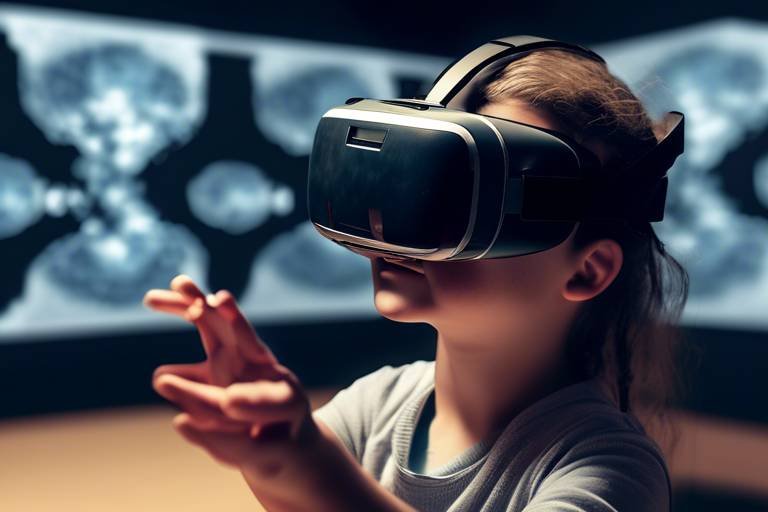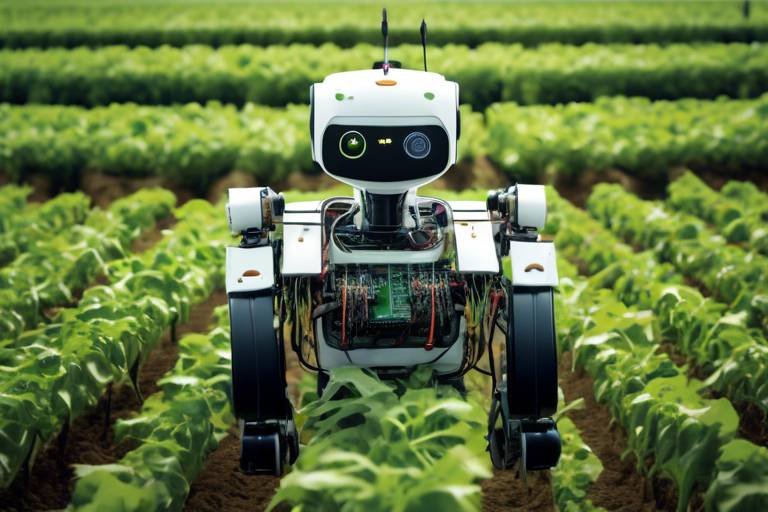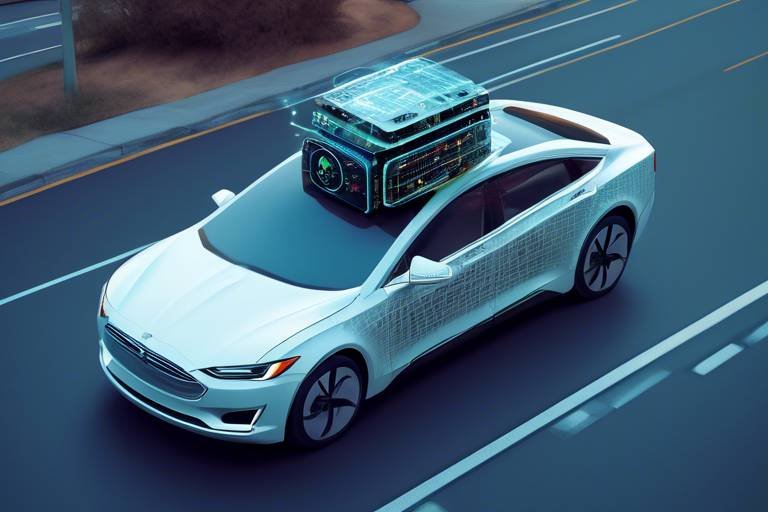The Future of Satellite Technology in Scientific Research
As we dive into the world of satellite technology, it's hard not to feel a sense of excitement about the future. The advancements we've seen in recent years are nothing short of revolutionary. Imagine a world where scientists can gather real-time data from the farthest reaches of our planet, or even beyond! This is no longer just a dream; it's happening right now. The integration of cutting-edge technology in satellite design and functionality is transforming the landscape of scientific research. From climate science to environmental monitoring, the implications are vast and profound.
One of the most remarkable aspects of these advancements is the ability to collect data with unprecedented accuracy and speed. With satellites orbiting our planet, researchers can access information that was once difficult, if not impossible, to obtain. This capability is crucial in a world where timely data can mean the difference between effective action and catastrophic consequences. For instance, scientists can now monitor changes in land use, track the movements of natural disasters, and even observe the health of ecosystems from space. It's like having a bird's eye view of the Earth, providing insights that were previously out of reach.
Furthermore, the future of satellite technology isn't just about gathering data; it's also about enhancing our ability to analyze and interpret that data. By integrating satellite information with ground-based observations, researchers can create more accurate models and predictions. This synergy between different data sources allows for a deeper understanding of the complexities of our environment. It's akin to piecing together a puzzle; each piece of data contributes to a clearer picture of our planet's health and the challenges it faces.
As we look ahead, it's clear that satellite technology will continue to evolve, driven by innovations such as miniaturization and artificial intelligence. These trends promise to make satellite data more accessible and applicable across a wider range of scientific disciplines. The miniaturization of satellites means that we can deploy larger constellations, enhancing our ability to observe changes over time. Imagine a swarm of tiny satellites working together to monitor weather patterns or track wildlife migrations—it's a game-changer!
Moreover, the integration of artificial intelligence into satellite technology is set to revolutionize data processing. With AI, we can analyze vast amounts of information at lightning speed, identifying patterns and anomalies that would take humans much longer to detect. This capability not only accelerates research but also leads to more informed decision-making. It’s like having a supercharged assistant who can sift through mountains of data in seconds, allowing scientists to focus on what they do best: interpreting and applying their findings.
In conclusion, the future of satellite technology in scientific research is bright and full of potential. As we continue to innovate and push the boundaries of what's possible, we can expect to see even more transformative impacts on how we understand and interact with our world. The possibilities are endless, and the journey has only just begun. Are you ready to explore what lies ahead?
- What are the main advancements in satellite technology? Recent advancements include improved data collection capabilities, miniaturization of satellites, and the integration of artificial intelligence for data analysis.
- How does satellite technology impact climate monitoring? Satellites provide essential data on climate variables, enabling scientists to track changes in temperature, greenhouse gas emissions, and more.
- What role do satellites play in disaster management? Satellites offer real-time data during natural disasters, aiding in emergency response and recovery planning.
- What are the future trends in satellite research? Future trends include the deployment of larger satellite constellations and the enhanced use of AI for faster data processing and analysis.
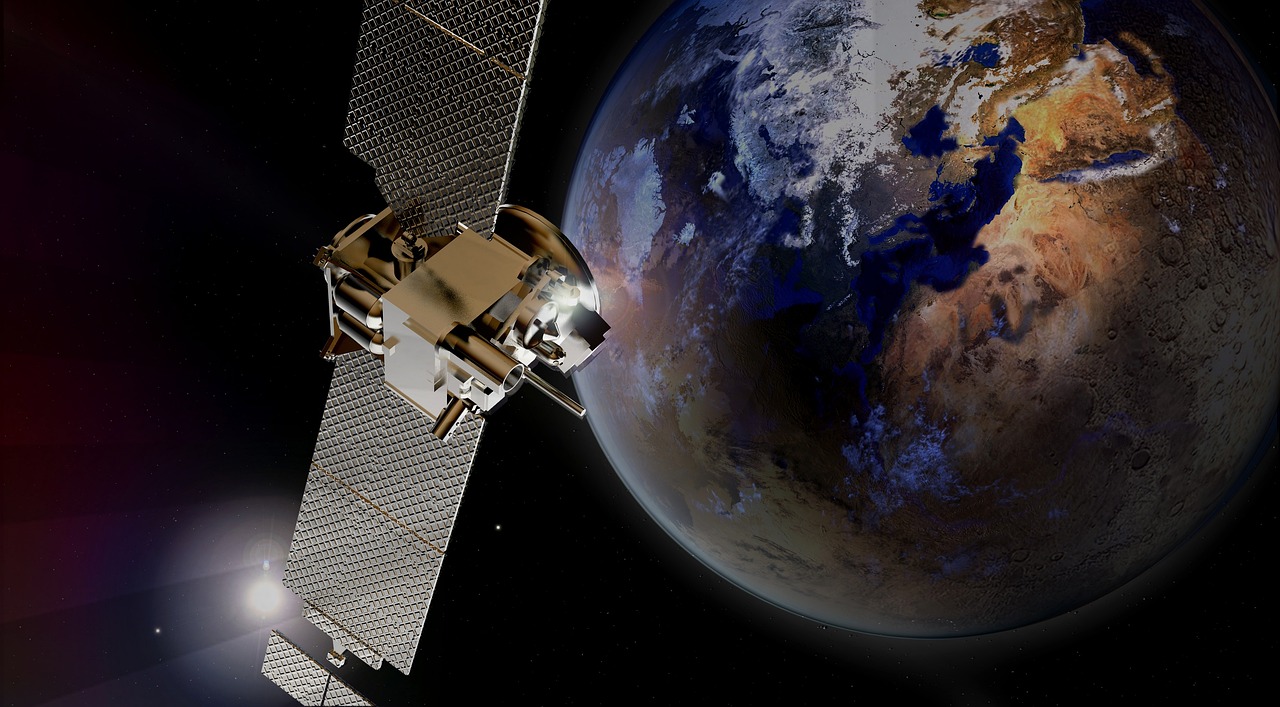
Advancements in Satellite Technology
In the ever-evolving landscape of scientific research, advancements in satellite technology have emerged as a game-changer. These innovations have not only transformed how we gather data but have also significantly enhanced our ability to analyze and interpret that data. Thanks to cutting-edge designs and improved functionalities, researchers can now obtain more accurate and timely information across various scientific fields, including climate science, environmental monitoring, and even urban planning.
One of the most notable advancements is the development of high-resolution imaging sensors. These sensors allow satellites to capture stunningly detailed images of the Earth's surface, enabling scientists to monitor changes over time with unprecedented clarity. For example, researchers can now track deforestation, urban sprawl, and even the subtle shifts in agricultural practices—all from thousands of miles above the Earth. This level of detail is crucial for understanding environmental changes and making informed decisions about resource management.
Moreover, the integration of multi-spectral and hyper-spectral sensors has opened up new avenues for data collection. These sensors can detect a wider range of wavelengths, providing insights into the health of vegetation, water quality, and even mineral content in soils. This capability is invaluable for ecologists and environmental scientists who rely on accurate data to assess ecosystem health and biodiversity. With this technology, researchers can identify stressed areas in forests or monitor the health of coral reefs, contributing to more effective conservation efforts.
Another significant leap forward is the miniaturization of satellite technology. The advent of CubeSats and other small satellite platforms has made it possible to deploy large constellations of satellites at a fraction of the cost of traditional models. This means that researchers can now gather data more frequently and from multiple angles, leading to a comprehensive understanding of dynamic processes on Earth. For instance, a constellation of small satellites can provide near-real-time data on weather patterns, allowing meteorologists to make more accurate predictions and better prepare for severe weather events.
Furthermore, advancements in satellite communication technology have facilitated the rapid transmission of data back to Earth. With the implementation of high-throughput satellites, researchers can now access vast amounts of data almost instantaneously. This capability not only accelerates the research process but also enhances collaboration among scientists worldwide. Imagine a team of researchers on different continents analyzing the same data set in real-time, sharing insights, and drawing conclusions that can lead to groundbreaking discoveries.
Lastly, the incorporation of artificial intelligence (AI) into satellite technology is revolutionizing data analysis. AI algorithms can process large datasets far more quickly than human analysts, identifying patterns and anomalies that might go unnoticed. This integration allows scientists to focus on interpreting results and making strategic decisions based on solid evidence. It's like having a super-smart assistant who can sift through mountains of data and present the most relevant findings, freeing up researchers to engage in more creative and impactful work.
In summary, the advancements in satellite technology are not just technological feats; they are essential tools that empower scientists to tackle some of the most pressing challenges of our time. As we continue to innovate, the possibilities for scientific research will only expand, paving the way for a deeper understanding of our planet and its complex systems.
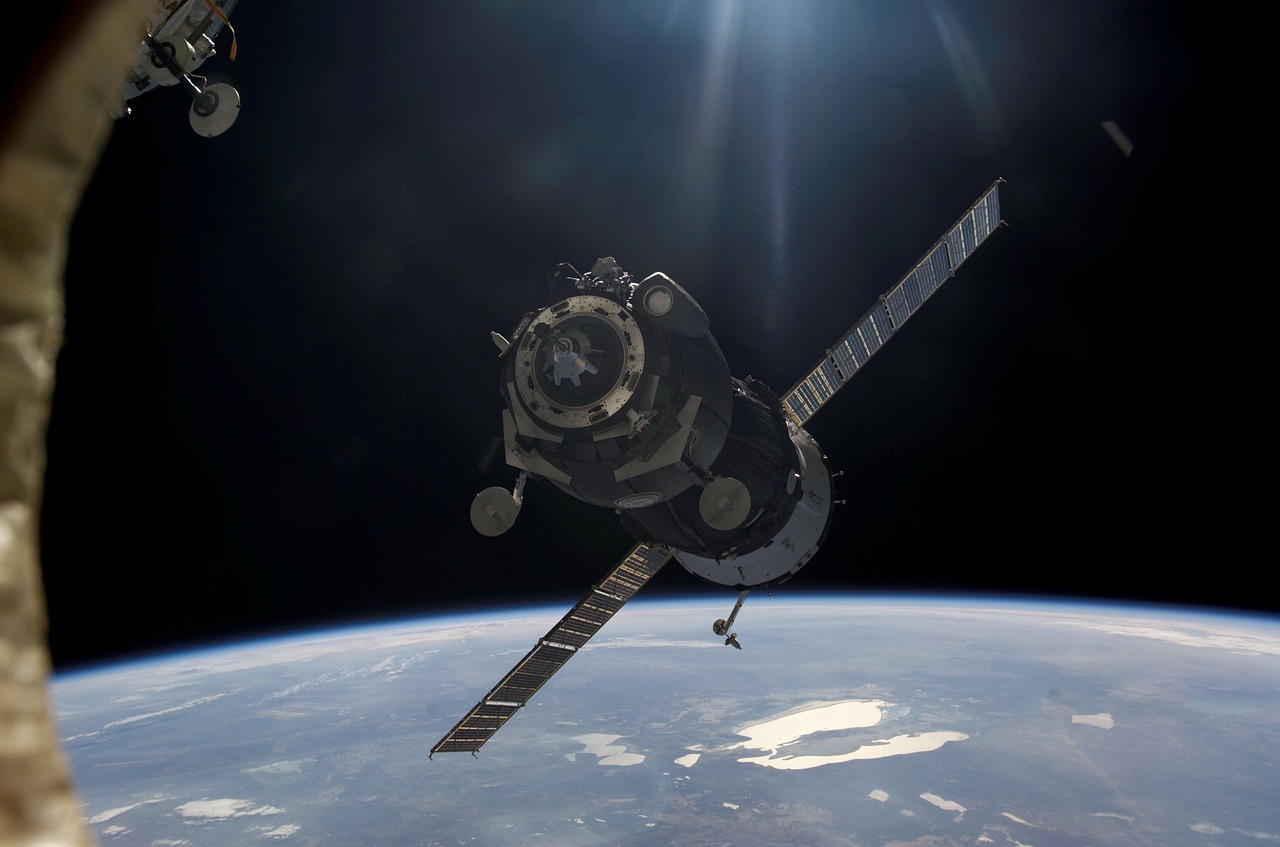
Applications in Earth Observation
Satellite technology plays a crucial role in Earth observation, acting as the eyes in the sky that provide invaluable data for a multitude of scientific inquiries. Imagine being able to monitor our planet from space, gathering insights that would be impossible to achieve from the ground. This capability is not just a luxury; it's a necessity in today's world where climate change, natural disasters, and urban expansion are pressing issues. By utilizing satellite data, researchers and policymakers can make informed decisions that directly impact environmental management and sustainability.
One of the most significant applications of satellite technology is in tracking climate change. Satellites equipped with advanced sensors can monitor various climate variables, such as temperature fluctuations and greenhouse gas emissions. This real-time data collection allows scientists to understand the dynamics of our climate system more effectively. For instance, by analyzing temperature trends over decades, researchers can identify patterns that indicate warming or cooling periods, helping to predict future climate scenarios.
In addition to climate monitoring, satellites are vital during natural disasters. When a hurricane approaches or an earthquake strikes, the ability to access real-time data is critical for emergency response teams. Satellites can provide imagery that shows the extent of damage, helping responders prioritize their efforts. For example, during the devastating wildfires in Australia, satellite data allowed authorities to assess the areas most affected and coordinate evacuation plans effectively.
Moreover, satellite technology is instrumental in monitoring land use changes. As urban areas expand, forests are cleared, and agricultural practices evolve, satellites provide a bird's-eye view of these transformations. By comparing satellite images taken over time, scientists can analyze how land use affects biodiversity and ecosystem health. This information is crucial for sustainable development practices and ensuring that natural habitats are preserved.
| Application | Description | Importance |
|---|---|---|
| Climate Monitoring | Tracking temperature and greenhouse gas emissions | Helps predict climate dynamics and future changes |
| Disaster Management | Providing real-time data during natural disasters | Aids in emergency response and recovery planning |
| Land Use Monitoring | Analyzing changes in land use over time | Supports sustainable development and conservation efforts |
In summary, the applications of satellite technology in Earth observation are vast and varied. From monitoring climate change to managing disasters and analyzing land use, satellites serve as an essential tool for researchers and decision-makers alike. As we continue to refine these technologies, the potential for enhanced data collection and analysis grows, paving the way for a more sustainable future.
- How do satellites collect data? Satellites use various sensors to capture data, including optical, radar, and thermal sensors, which can measure different environmental variables.
- What role do satellites play in disaster response? Satellites provide critical real-time imagery and data that help emergency responders assess damage and plan recovery efforts during and after disasters.
- Can satellite data be integrated with other data sources? Yes, integrating satellite data with ground-based observations enhances the accuracy of environmental models and improves decision-making processes.

Climate Monitoring
Climate monitoring has become a cornerstone of our understanding of the Earth's changing environment, and satellites are at the forefront of this critical mission. With the ability to capture vast amounts of data from space, satellites equipped with advanced sensors play a pivotal role in tracking essential climate variables, such as temperature, humidity, and greenhouse gas emissions. This data is not just numbers; it represents the heartbeat of our planet, offering insights into how human activities and natural processes influence the climate.
Imagine satellites as our planet's watchful guardians, orbiting high above and gathering information that is crucial for scientists and policymakers alike. These high-tech marvels provide a comprehensive view of the Earth's atmosphere, oceans, and land surfaces, enabling researchers to understand climate dynamics better. For instance, by monitoring temperature fluctuations over time, scientists can identify trends that may indicate the onset of climate change. This proactive approach is akin to having an early warning system that alerts us to potential dangers before they escalate.
Moreover, the integration of satellite data with ground-based observations enhances the accuracy of climate models. By combining these two sources of information, researchers can create a more holistic view of the climate system. This integration is vital for developing reliable predictions about future climate scenarios. For example, when analyzing the impact of greenhouse gas emissions, scientists can utilize satellite data to observe changes in atmospheric composition and correlate these changes with ground-level measurements. This synergy between satellite and ground data is like piecing together a puzzle, where each piece contributes to a clearer picture of our climate's future.
As we delve deeper into climate monitoring, it's essential to highlight the various technologies that make this possible. Satellites are equipped with remote sensing instruments that allow them to gather data without physical contact. These instruments can detect changes in the Earth's surface, such as deforestation, urbanization, and the melting of polar ice caps. This capability enables scientists to monitor large-scale environmental phenomena and provides invaluable insights into ecosystem health and resource management.
| Climate Variables Monitored | Satellite Instruments Used | Importance |
|---|---|---|
| Temperature | Thermal Infrared Sensors | Understanding heat distribution and trends |
| Greenhouse Gas Emissions | Gas Analyzers | Tracking sources and impacts on climate |
| Sea Level Rise | Radar Altimeters | Monitoring changes in ocean levels |
| Land Use Changes | Optical Imaging Sensors | Assessing human impact on ecosystems |
In conclusion, climate monitoring through satellite technology is not just an academic exercise; it is a vital tool for safeguarding our planet's future. By providing accurate and timely data, satellites empower scientists to make informed decisions and create effective strategies for mitigating the impacts of climate change. As we continue to innovate and improve these technologies, the potential for understanding our climate will only grow, paving the way for a more sustainable future.
- How do satellites monitor climate change? Satellites use advanced sensors to collect data on various climate variables, such as temperature and greenhouse gas emissions, from space.
- What are the benefits of using satellite data for climate research? Satellite data provides a comprehensive view of the Earth's climate, enabling more accurate predictions and better understanding of climate dynamics.
- Can satellite data be integrated with ground-based observations? Yes, integrating satellite data with ground observations enhances the accuracy of climate models and predictions.
- What role do satellites play in disaster management? Satellites provide real-time data during natural disasters, aiding in emergency response and recovery planning.

Remote Sensing Techniques
Remote sensing techniques have revolutionized the way scientists collect and analyze data from our planet. Imagine being able to observe vast areas of land, oceans, and even the atmosphere without ever leaving your desk. This is precisely what remote sensing allows researchers to do. By utilizing satellites equipped with sophisticated sensors, scientists can gather information on a scale that was previously unimaginable. These techniques provide insights into various environmental phenomena, from tracking deforestation to monitoring urban sprawl.
One of the key advantages of remote sensing is its ability to collect data over large areas quickly and efficiently. For instance, satellites can capture images and measurements of entire regions in a matter of minutes. This capability is particularly crucial in today's fast-paced world, where timely information is essential for effective decision-making. Remote sensing not only helps in understanding current conditions but also aids in forecasting future changes, making it an invaluable tool for researchers and policymakers alike.
There are several types of remote sensing techniques that scientists employ, each with its unique applications and benefits. Some of the most common techniques include:
- Optical Remote Sensing: This technique uses visible light to capture images of the Earth's surface. It is particularly useful for monitoring vegetation health and land use changes.
- Radar Remote Sensing: Utilizing microwave signals, radar can penetrate clouds and work in various weather conditions, making it ideal for monitoring changes in land surface and detecting natural disasters.
- LiDAR (Light Detection and Ranging): This method employs laser pulses to measure distances and create detailed three-dimensional maps of the Earth's surface, which is essential for studying topography and vegetation structure.
Furthermore, the integration of remote sensing data with geographic information systems (GIS) enhances the ability to visualize and analyze complex datasets. By layering different types of information, researchers can uncover relationships and patterns that would be difficult to identify otherwise. For example, combining land use data with satellite imagery can reveal how urban expansion affects local ecosystems.
As technology continues to advance, the capabilities of remote sensing techniques are expanding. New sensors are being developed that can capture data in multiple spectral bands, providing richer information about the Earth's surface. Additionally, the miniaturization of satellite technology allows for the deployment of small satellites, or CubeSats, which can be used to gather high-resolution data at a lower cost. This democratization of satellite technology means that more researchers and organizations can access valuable data, ultimately leading to a better understanding of our planet.
In conclusion, remote sensing techniques are at the forefront of scientific research, enabling us to monitor and analyze our environment with unprecedented accuracy and efficiency. As we continue to refine these technologies and integrate them with other scientific methods, the potential for discovery and innovation is limitless. The future of remote sensing is bright, promising to unveil new insights into the complexities of our world.
What is remote sensing?
Remote sensing is the process of collecting information about an object or area from a distance, typically using satellites or aircraft equipped with sensors.
How does remote sensing benefit scientific research?
Remote sensing provides large-scale data quickly and efficiently, allowing researchers to monitor environmental changes, assess natural disasters, and study land use patterns.
What types of sensors are used in remote sensing?
Common sensors include optical sensors, radar sensors, and LiDAR, each serving different purposes based on the type of data required.
Can remote sensing data be integrated with other data sources?
Yes, remote sensing data can be integrated with ground-based observations and geographic information systems (GIS) to enhance analysis and visualization.
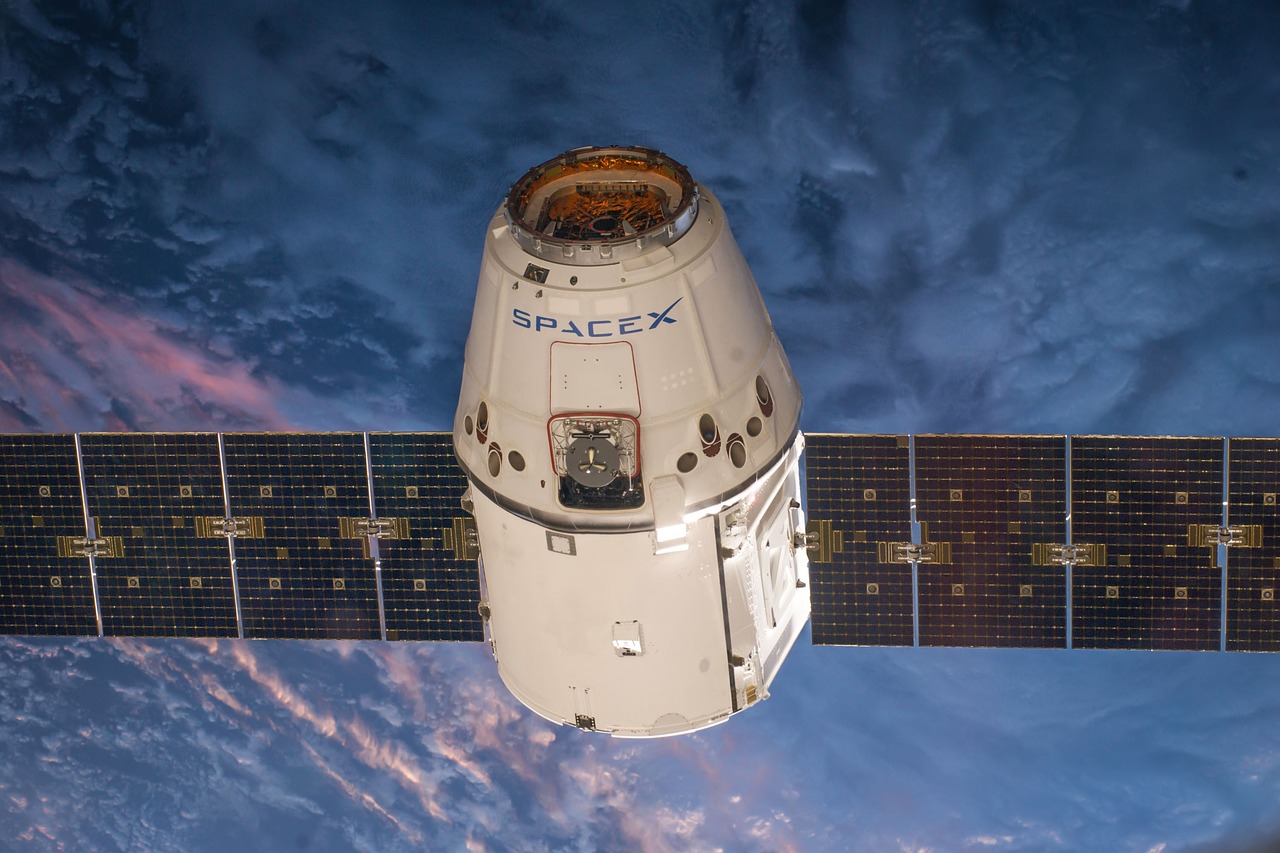
Data Integration and Analysis
When it comes to understanding our planet's complex systems, the integration of satellite data with ground-based observations is like putting together the pieces of a giant puzzle. Each piece contributes to a clearer picture of environmental changes, allowing scientists to create more accurate climate models. This synergy not only enhances the precision of data but also opens new avenues for research, enabling scientists to draw reliable conclusions about phenomena such as climate change, deforestation, and urbanization.
Imagine trying to predict the weather using only one source of information. It would be akin to navigating a ship through fog without a compass. By combining satellite data with on-the-ground measurements, researchers can significantly improve their forecasts. For instance, satellite imagery can reveal large-scale patterns, while ground-based data provides localized details. This multifaceted approach is crucial in an era where climate variability poses unprecedented challenges.
Furthermore, the integration of data enables researchers to monitor changes over time. By analyzing historical satellite data alongside current observations, scientists can identify trends and make informed predictions about future conditions. This capability is especially vital in fields like agriculture, where understanding seasonal changes can lead to better crop management and food security.
To illustrate the importance of data integration, consider the following table that summarizes the benefits of combining satellite and ground-based data:
| Aspect | Satellite Data | Ground-Based Data | Combined Benefits |
|---|---|---|---|
| Spatial Coverage | Global | Localized | Comprehensive understanding of both global and local phenomena |
| Temporal Resolution | Frequent updates | Periodic measurements | Timely insights into changes over time |
| Data Accuracy | Broad patterns | Detailed observations | Enhanced model reliability and predictive power |
Moreover, the rise of advanced analytical tools, powered by artificial intelligence and machine learning, has revolutionized how we process and interpret this integrated data. These technologies can sift through massive datasets, identifying patterns and anomalies that might otherwise go unnoticed. This capability not only speeds up the analysis process but also enhances our understanding of complex environmental interactions.
In summary, the integration of satellite and ground-based data is not just a technical enhancement; it is a fundamental shift in how we approach scientific research. By leveraging the strengths of both data types, scientists can create a more holistic view of our planet, leading to better-informed decisions and policies aimed at addressing pressing environmental challenges.
- What is data integration in satellite research? Data integration refers to the process of combining satellite data with ground-based observations to enhance the accuracy and reliability of scientific research.
- Why is it important to integrate satellite and ground-based data? Integrating these data sources allows for a more comprehensive understanding of environmental changes, improving climate models and predictions.
- How does artificial intelligence contribute to data analysis? AI enhances data processing capabilities, enabling faster analysis and the identification of patterns in large datasets, which drives more informed research outcomes.
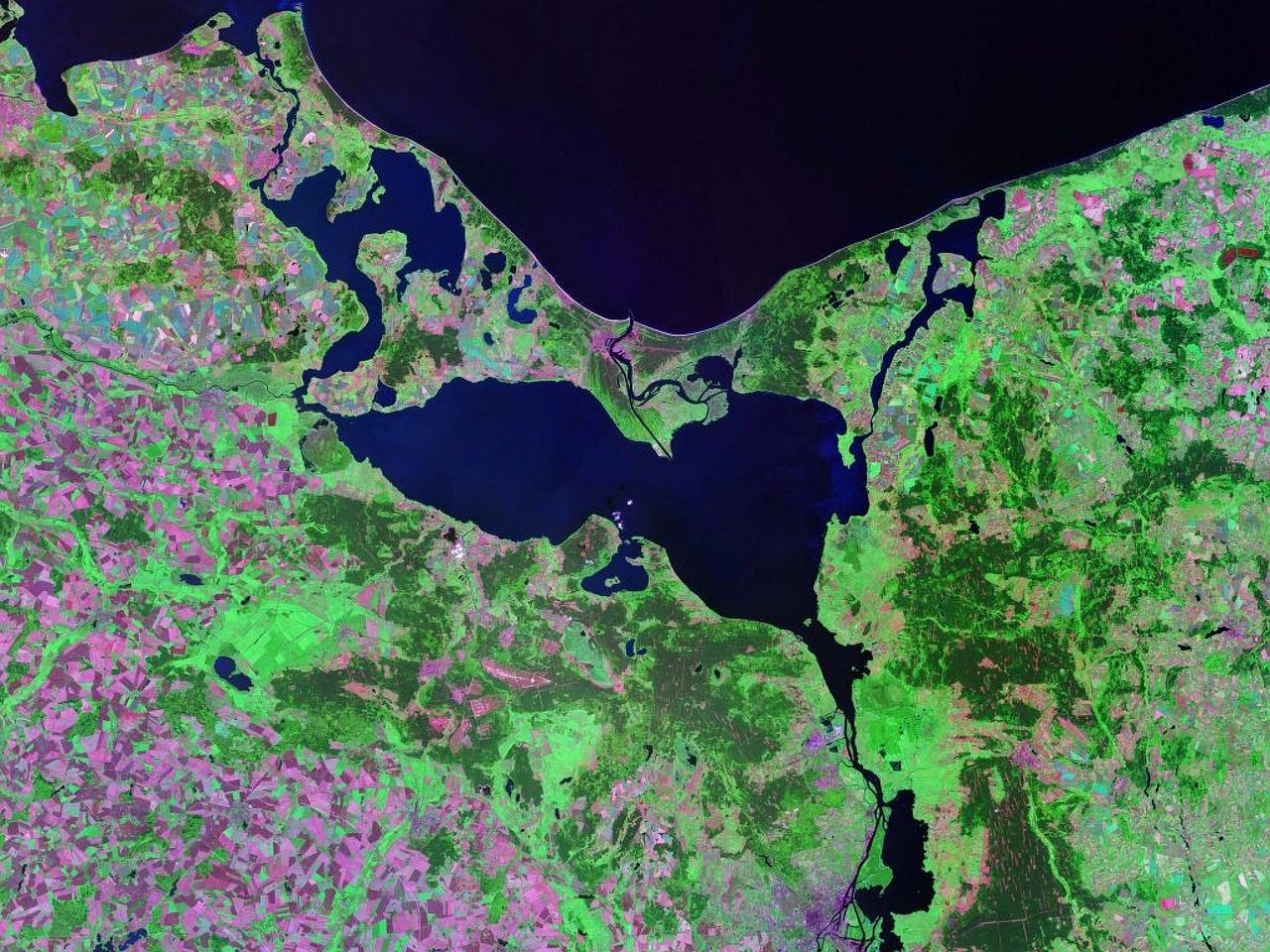
Disaster Management and Response
When it comes to disaster management, satellites are like the unsung heroes in the sky. Imagine a massive hurricane brewing over the ocean or a wildfire raging through a forest; the ability to monitor these events in real-time can mean the difference between chaos and organized response. Satellites provide crucial data that helps emergency responders assess situations quickly and accurately. They capture images and gather information about the affected areas, allowing authorities to make informed decisions about evacuation routes, resource allocation, and rescue operations.
One of the most significant advantages of satellite technology in disaster response is its capability to deliver real-time data. For instance, during a natural disaster, satellites equipped with advanced sensors can track changes in land use, flooding patterns, and damage assessments. This real-time information is invaluable for coordinating rescue efforts and ensuring that help reaches those in need as swiftly as possible. Without this technology, responders would rely solely on outdated information, which can lead to delays and mismanagement.
Furthermore, satellites can aid in post-disaster recovery. Once the immediate threat has passed, satellite imagery can be used to evaluate the extent of the damage. This data is essential for planning recovery efforts, determining where to allocate funds, and assessing the long-term impacts on communities. For example, after a flood, satellite images can help identify the areas most affected, guiding relief efforts in a targeted manner.
| Disaster Type | Satellite Application | Benefits |
|---|---|---|
| Hurricanes | Tracking storm paths and intensity | Improved evacuation planning |
| Wildfires | Monitoring fire spread and hotspots | Efficient resource allocation |
| Flooding | Assessing flood extent and damage | Targeted relief efforts |
Moreover, the integration of satellite data with other technologies, such as geographic information systems (GIS), enhances the ability to visualize and analyze disaster scenarios. This combination allows for the creation of detailed maps that can show the extent of damage, population density in affected areas, and potential hazards, enabling responders to plan their actions more effectively.
In summary, the role of satellites in disaster management and response cannot be overstated. They provide critical data that enhances situational awareness, supports effective decision-making, and ultimately saves lives. As technology continues to evolve, we can expect even greater advancements in how satellites contribute to disaster preparedness and recovery, making our world a safer place.
- How do satellites monitor natural disasters? Satellites use advanced sensors to collect data on weather patterns, land use changes, and environmental conditions, allowing them to track and predict disasters in real-time.
- What types of disasters can satellites help manage? Satellites are effective in managing a wide range of disasters, including hurricanes, wildfires, floods, and earthquakes, by providing critical data for assessment and response.
- How does satellite data improve emergency response? By offering real-time information and detailed imagery, satellite data enables emergency responders to make informed decisions quickly, improving the efficiency and effectiveness of their actions.
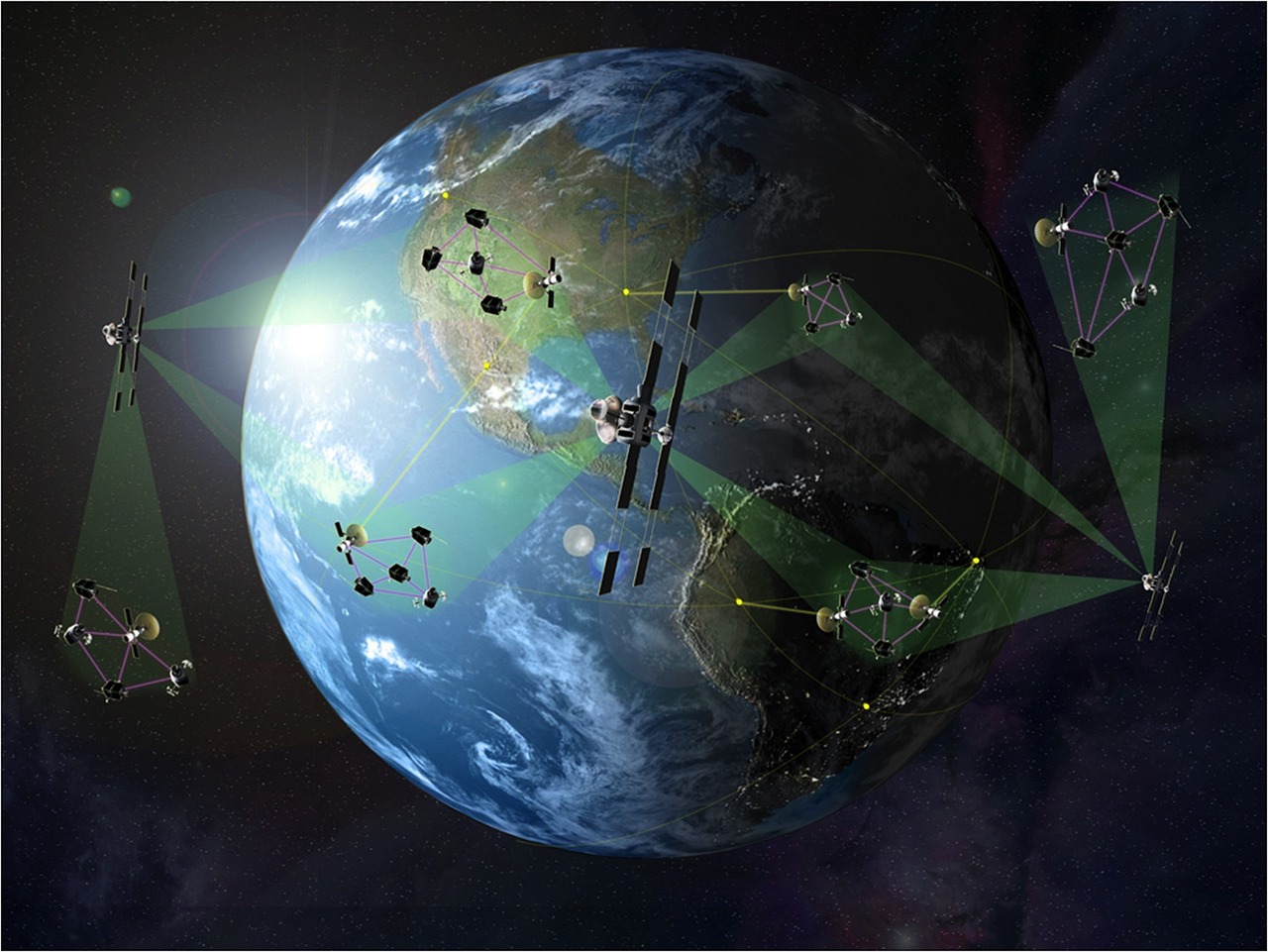
Future Trends in Satellite Research
The landscape of satellite research is evolving at a breathtaking pace, driven by technological advancements that promise to redefine our understanding of the world. As researchers and scientists look to the skies, they are not just observing; they are innovating. One of the most exciting trends is the miniaturization of satellites. Imagine a future where small, efficient satellites—often referred to as CubeSats—can work in concert to gather data more effectively than their larger predecessors. This shift allows for the deployment of vast constellations of satellites, resulting in enhanced temporal resolution and coverage. The implications are profound: researchers can collect data more frequently and from more locations than ever before, leading to richer datasets and deeper insights into environmental changes.
Another groundbreaking trend is the integration of artificial intelligence (AI) with satellite technology. This combination is like adding a turbocharger to an already powerful engine. AI algorithms can analyze massive datasets generated by satellites at lightning speed, identifying patterns and anomalies that human analysts might miss. This capability is crucial for applications such as climate monitoring and disaster response. For instance, during a natural disaster, AI can quickly process satellite imagery to assess damage, helping emergency responders prioritize their efforts effectively. The future of satellite research, therefore, is not just about collecting data; it's about making sense of it in real-time.
Moreover, as we look ahead, we can expect to see advancements in satellite communication technologies. The ability to transmit data more efficiently will allow researchers to access real-time information from satellites, enhancing decision-making processes in critical fields like agriculture, urban planning, and environmental management. With faster data transmission, the gap between observation and action will narrow, empowering scientists and policymakers to respond swiftly to emerging challenges.
To illustrate these trends, consider the following table that highlights the key benefits of miniaturization and AI integration in satellite research:
| Trend | Benefits |
|---|---|
| Miniaturization |
|
| AI Integration |
|
As we embrace these future trends, the possibilities for scientific research expand exponentially. The ability to combine vast amounts of satellite data with advanced analytical tools means that researchers can tackle complex problems with unprecedented efficiency. Whether it's monitoring the health of our planet, tracking the effects of climate change, or responding to natural disasters, the future of satellite technology in scientific research is not just bright; it’s transformative.
Q1: What is miniaturization in satellite technology?
A1: Miniaturization refers to the trend of creating smaller, more efficient satellites, which allows for larger constellations to be deployed, improving data collection capabilities.
Q2: How does artificial intelligence enhance satellite research?
A2: AI enhances satellite research by enabling faster data processing and analysis, allowing researchers to identify patterns and anomalies in large datasets quickly.
Q3: What are CubeSats?
A3: CubeSats are small, standardized satellites that can be used for a variety of scientific and commercial applications, often at a lower cost than traditional satellites.
Q4: Why is real-time data important in satellite research?
A4: Real-time data allows researchers and decision-makers to respond quickly to environmental changes, disasters, and other urgent situations, improving outcomes and resource management.

Miniaturization of Satellites
The is one of the most exciting developments in the field of space technology. Imagine a world where tiny satellites, often no larger than a shoebox, can perform tasks that once required massive, expensive spacecraft. This shift not only reduces costs but also opens up a plethora of opportunities for scientific research. By deploying smaller satellites, researchers can create larger constellations that provide more frequent and comprehensive data collection.
These small satellites, commonly referred to as CubeSats or Nanosatellites, are revolutionizing how we gather and analyze data from space. Their compact size allows for easier launch and deployment, enabling scientists to gather data from multiple perspectives and locations simultaneously. For instance, a constellation of miniaturized satellites can monitor environmental changes across vast regions, delivering real-time information that is crucial for understanding complex phenomena like climate change and natural disasters.
Furthermore, the miniaturization trend is not just about size; it also enhances the capabilities of satellites. These small wonders are equipped with advanced sensors and technologies that allow them to capture high-resolution images and data with remarkable precision. For example, a single CubeSat can collect data on atmospheric conditions, pollution levels, and even monitor wildlife movements, all while orbiting the Earth at a fraction of the cost of traditional satellites.
To illustrate the impact of miniaturization, consider the following table that compares traditional satellites with miniaturized counterparts:
| Feature | Traditional Satellites | Miniaturized Satellites |
|---|---|---|
| Size | Large (up to several tons) | Small (1-10 kg) |
| Cost | Millions to billions of dollars | Thousands to millions of dollars |
| Launch Frequency | Infrequent | Frequent |
| Data Resolution | High | Varies, but improving |
As we move forward, the implications of this miniaturization trend are profound. Not only does it democratize access to space, allowing universities and smaller organizations to participate in satellite missions, but it also fosters collaboration across the globe. Researchers from different countries can work together to launch constellations of miniaturized satellites, pooling resources and expertise to tackle pressing global challenges.
In conclusion, the miniaturization of satellites represents a paradigm shift in how we conduct scientific research. By harnessing the power of small, efficient satellites, we can enhance our observational capabilities, improve data collection, and ultimately gain a deeper understanding of our planet and the universe beyond. This trend is not just a technological advancement; it's a gateway to a future where satellite data is more accessible, timely, and impactful than ever before.
- What are CubeSats? CubeSats are small, modular satellites that are often used for scientific research and technology demonstrations.
- How do miniaturized satellites improve data collection? They allow for the deployment of larger constellations, which can provide more frequent and comprehensive data.
- Are miniaturized satellites less effective than traditional ones? While they may have limitations, advancements in technology are continually improving their capabilities.
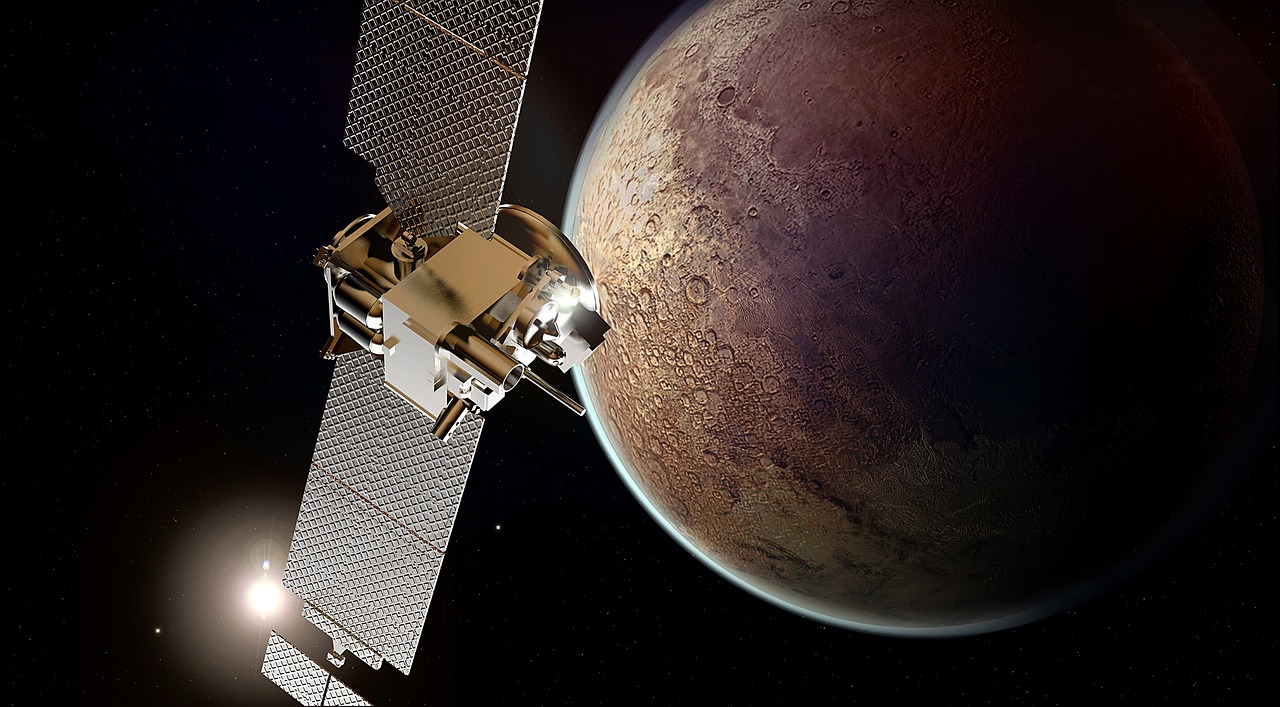
Artificial Intelligence Integration
In the ever-evolving landscape of satellite technology, the integration of artificial intelligence (AI) is proving to be a game-changer. Imagine having a satellite that not only collects data but also processes it in real-time, identifying patterns and anomalies that would take human analysts days or even weeks to uncover. This is no longer a distant dream; it is the reality we are stepping into. AI algorithms can sift through vast amounts of data, making sense of it in ways that enhance our understanding of the Earth and its systems.
For instance, AI can analyze satellite imagery to detect changes in land use, monitor deforestation, or even track the movement of wildlife. By employing machine learning techniques, these AI systems can learn from historical data, improving their accuracy over time. This means that scientists can rely on AI to provide insights that are not only timely but also incredibly precise. The potential applications are endless, ranging from environmental monitoring to urban planning.
Moreover, the integration of AI facilitates the development of predictive models that can forecast environmental changes. By analyzing trends and patterns, AI can help researchers anticipate events such as floods, droughts, or other natural disasters. This predictive capability is crucial for disaster preparedness and response, allowing communities to take proactive measures to mitigate risks.
To illustrate the impact of AI in satellite technology, consider the following table that highlights some of the key benefits:
| Benefit | Description |
|---|---|
| Enhanced Data Processing | AI algorithms can analyze large datasets quickly, providing insights in real-time. |
| Improved Accuracy | Machine learning models become more accurate over time as they learn from new data. |
| Predictive Analytics | AI can forecast environmental changes, aiding in disaster preparedness and resource management. |
| Automation of Tasks | AI can automate routine data analysis tasks, freeing up researchers to focus on complex problems. |
In conclusion, the integration of artificial intelligence into satellite technology is revolutionizing the way we gather and interpret data. By harnessing the power of AI, researchers can unlock new insights, enhance predictive capabilities, and ultimately make more informed decisions that benefit society. As we look to the future, the collaboration between satellite technology and artificial intelligence will undoubtedly pave the way for groundbreaking discoveries and innovations.
- What is the role of AI in satellite technology?
AI enhances data processing, improves accuracy, and facilitates predictive analytics in satellite operations. - How does AI improve environmental monitoring?
AI analyzes satellite imagery to detect changes in land use, monitor ecosystems, and predict natural disasters. - Can AI help in disaster management?
Yes, AI can provide real-time data analysis during disasters, aiding in emergency response and recovery planning. - What are the future prospects for AI in satellite research?
The integration of AI is expected to grow, leading to more efficient data analysis and innovative applications across various scientific fields.
Frequently Asked Questions
- What are the recent advancements in satellite technology?
Recent advancements in satellite technology include enhanced data collection capabilities with improved sensors, miniaturization of satellite designs, and the integration of artificial intelligence for data analysis. These innovations allow researchers to gather more accurate and timely information across various scientific fields.
- How do satellites contribute to climate monitoring?
Satellites equipped with advanced sensors are crucial for monitoring climate variables such as temperature, humidity, and greenhouse gas emissions. They provide real-time data that helps scientists understand climate dynamics and predict future changes more effectively, ultimately aiding in climate research and policy-making.
- What role do satellites play in disaster management?
Satellites are vital for disaster management as they provide real-time data during natural disasters. This information helps emergency responders assess damage, plan recovery efforts, and mitigate the impacts on affected communities, making satellite technology an essential tool in crisis situations.
- What is remote sensing, and how is it used?
Remote sensing is a technique that involves collecting data from satellites without physical contact. It allows researchers to analyze large-scale environmental phenomena, monitor ecosystem health, and manage natural resources effectively. This technology is instrumental in understanding and addressing various environmental challenges.
- How does data integration enhance climate models?
Integrating satellite data with ground-based observations enhances the accuracy of climate models by providing a more comprehensive view of environmental changes. This combination of data sources enables researchers to draw reliable conclusions about climate dynamics and their impacts on ecosystems and human activities.
- What future trends are expected in satellite research?
Future trends in satellite research include further miniaturization of satellites, allowing for larger constellations that improve data temporal resolution and coverage. Additionally, the integration of artificial intelligence will enhance data processing capabilities, enabling quicker analysis and better identification of patterns in large datasets.










